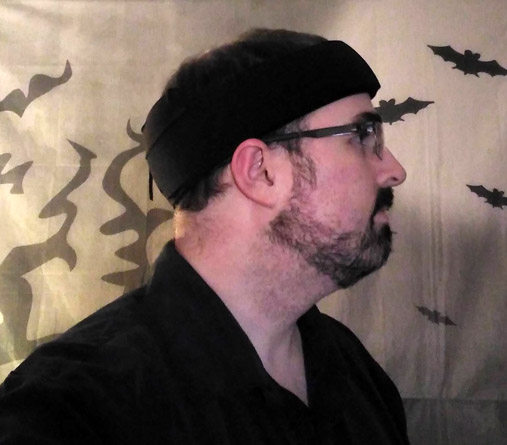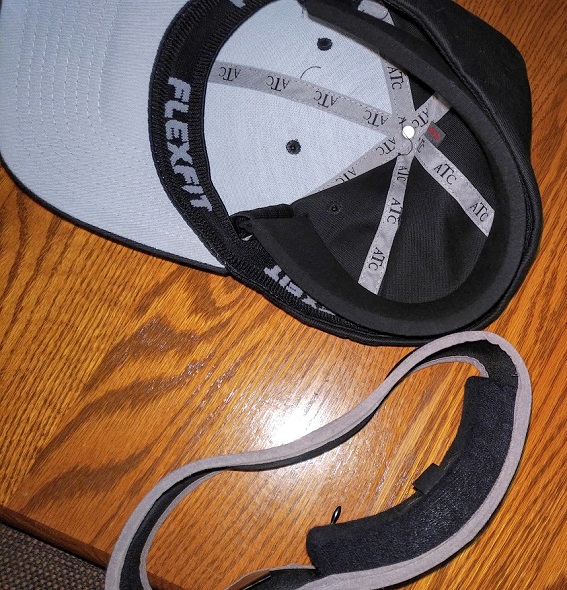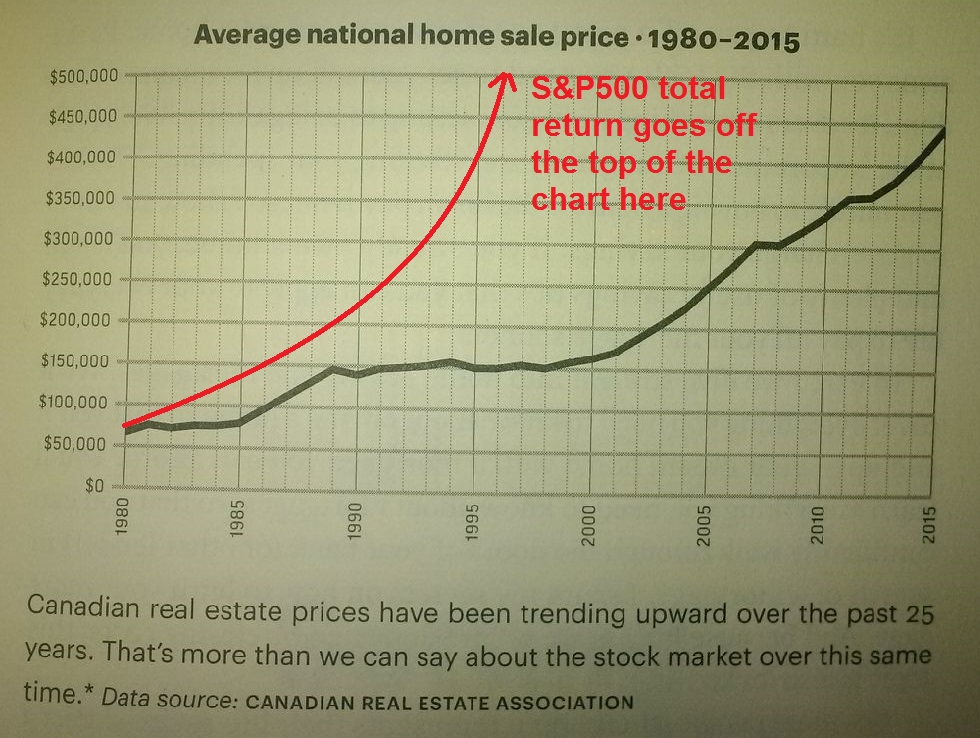Head Protection for Curling & Skating
November 8th, 2018 by PotatoConcussions are no joke. The more research we do, the more caution it seems we should be taking. We’re learning about the dangers of second impacts, and concussion protocols are more common in lots of sports, and after a suspected concussion players are getting benched more consistently. Helmets for more and more things are becoming a bigger part of our lives.
I’m good with that trend for the most part. I was wearing a bike helmet at school in the 90’s, before it was mandatory and when it was still kind of dorky (though that quickly changed with the help of the law). I still wear my helmet every time I go out on my bike. It just makes sense, and it’s totally socialized now to be the norm: you protect your lid on your bike.
I go years between falls in curling, and have never hit my head… so far. I fall more in recreational skating, but despite slapping a helmet on my kid, don’t wear one myself in either sport.
Plus, as such things go, a friend had a concussion (not from curling, but it still makes you think) and I had one of my rare, once-in-a-hundred-games fall a few weeks ago (not on my head, but again, it makes you think). There were some cases in the news, reminding us that while you fall less with experience, even pros take a tumble, and in rare cases they can be deadly. This year I’m playing mixed doubles, too, which involves more jumping up to sweep your own rock and generally more sliding around without a gripper on, which I figure is slightly more risky. So I think I’m ready to once again be the dorky kid protecting my noggin before it’s totally cool, which is helped along by my birthday present from my very generous parents: they gave me money for a whole new set of curling gear: new shoes, new pants, new brush head, and a head protector.
Recently, some head protectors that are not helmets have come out for curling and skating: some variation of a hat or headband with extra padding. And I’ve seen more being used on the ice (still a small minority of players, mostly older or newer players, but it’s moved beyond the “that one guy” phase to a growing trend).
And even without a standard to say exactly how much they help, any one of the options should be better than nothing (indeed, the warning label on one says that it’s not designed to be a helmet, just to be better than nothing). The different companies have tested their gear, with the two Canadian ones passing (of course) the test hockey helmets use for falls. I don’t know if I can reproduce the testing results they sent me, but roughly speaking these will cut down the impact of a fall by about a third to a half.
My research turned up three companies to look into:
[Update Nov 2020: two more to mention are a full helmet option from Asham and a new entry from Dynasty Curling in touque form.]
So I ordered a few for myself, and for Wayfare for skating… enough to fit out a whole team so I could share with friends (with medium-to-large heads) when I inevitably try to drag them out to learn to curl at a funspiel, and of course write about them for the blog!
Ice Halo
I tried a flexfit ballcap style Pro-Hat and a Halo HD. For protection, Ice Halo uses a high-density foam: this will compress and spring back into shape if you give it a firm squeeze, but it’s for higher impacts, so this is not like a squishy pillow. The halo is, as the name implies, a ring all the way around, and will stretch to fit a few different head sizes. The had just has foam in an arc around the back and part of the sides, about half the thickness of the Halo HD. Both the hat and Halo HD use elastics cleverly built into the product to keep it snug on your head, and it does fit snug. Which, I suppose it has to in order to stay on your head in the event of a fall. The hat didn’t bother me while wearing it, but I was left with a bit of a mark from being tight on my forehead. I found the Halo HD could get uncomfortable after a while, especially if I tried to wear it right against my ears (and thus my glasses). However, if I positioned it just right, the gap where the two arcs open for size created a nice little nook for the top of my ears and the arms of my glasses. To be fair, I’m right at the upper edge of what the medium is supposed to fit (though Wayfare also thought it was snug and she’s in the lower end of the size range). The instructions say to pull at the front, which does loosen it up, but the elastics will tighten it up again in a minute or two, so you kind of have to constantly do that.
I didn’t mind it without my glasses (indeed, all of these options will be fine for people who use contacts to sport or who don’t need vision correction), but then I can’t play like that.
The Ice Halo products had no weird chemical smell when arriving, and coming from within Canada the shipping was the fastest. Though the impact testing results for all options look to be in the same general range, the Ice Halo HD did look to have the greatest cushioning of the options here (which fits with intuition, as there’s the most foam there to compress), but I’m not sure how meaningful the difference is — in my non-expert view, finding a head protector you’ll actually wear consistently may be the best criteria.

It’s a slightly thick headband that I’m not wearing over my ears.

It looks like a ballcap, with a bit of a bulge.

You can see the bulge of the protective foam from the back.
Crasche
Crasche builds their products around modular protective inserts, backed by strong polycarbonate and lined with neoprene, which would be reusable after impact.
I got a Crasche Curler touque, which has two thinner protective elements in the front and two tall, regular thickness ones in the back, as well as a Middie (designed for skating, but I might also wear it curling sometimes). The Crasche products are soft material with special pockets to hold the protective inserts, which you can easily slide out to clean or to adjust the fit (e.g., they suggest turning some pads upside-down to make your middie fit tighter, and presumably you can sacrifice some to make it fit looser).
Though the protective elements are rather different from the Ice Halo, for the Middie the look from the outside is quite similar: a black headband of about the same thickness. I found the Middie a touch more comfortable, despite their size guide suggesting my head was too big for the size I got. On my head it naturally sits just a bit above my ears (and glasses), and the segmented nature let me adjust the front a bit independently of the back (i.e., it could bend a bit in the middle to go around my ears while still being low on the back of my head). However, the harder inserts do play greater havoc with glasses if the fit does put them over the ears.
The touque I found quite comfortable to put on for short periods. However, it had a tendency to skootch up my head when I tilted my head far back (for instance, when throwing a stone) so I had to keep pulling it down. The band around the edge is also fairly tight (which I suppose it has to be to stay on your head in a fall), and the hat wasn’t quite big enough to totally cover my ears, which was awkward and meant that as I was adjusting it, I’d often end up screwing up how my glasses sat on my ears, which would lead to a cycle of adjustments. Wayfare thought it fit her well, so even though my 23″ head should fit the 21.5-23″+ size, it might be just a hair too small for me, which is affecting the comfort. I might try it with just the rear pads installed and update later.
A few nitpicks on the choice of neoprene: the Crasche products smell strongly of neoprene when they first arrive, which may be an issue for those with sensitive noses — they may need some time to off-gas (after about a week the smell is not noticeable to me). Neoprene also doesn’t absorb moisture, so if I’m doing anything more energetic than holding the broom, I’ll find droplets of sweat lining the pads (on the flip side, they’re easy to wipe down).
Also, the site also says that Canada is duty free for shipping, and while that’s technically true (no duties or crazy brokerage fees thanks to using USPS for shipping), I did have to pay HST to pick it up at the post office, so be prepared for that.

The segmented plates let this bend around my ears a bit, but otherwise it looks very similar to the Ice Halo HD.

In terms of style/look, the Crasche Curler was actually my favourite. Despite my lack of photograhy skills making this look black, the hat is their dark grey option.
Goldline
The Goldline headfirst line uses expanded polystyrene (EPS, the hard foam in bike helmets) to make their pads, which go inside a variety of holders — hats, bands, or visors. Whichever style you choose, the pads all cover the back of the head only.
This is by far the most common style I see other players wearing, perhaps in part because Goldline has a store on this side of town so people can buy in person rather than ordering online, and their products are also available at Spokes & Sports in Toronto.

Side-by-side photo of the Ice Halo Pro-Hat and Goldline protective pad in a headband style.
Unfortunately I wasn’t able to find one in my size to show side-by-side with modelled on my head, but their marketing photos do a good job of showing what they look like. I did borrow one to show side-by-side with my Ice Halo pro hat how much thicker the pad is.
Summary
Really, any of these is likely better than nothing when out on the ice.
I preferred the hat styles to the band styles, and have the Ice Halo Pro-Hat and Crasche Curler in my curling gear bag to try out further, though after a few games I’m quickly gravitating toward the Ice Halo hat as my main choice. After all, a ballcap style is a very natural style fit for me (I often wear one anyway). I do want to give the headband styles (Ice Halo HD and Crasche Middie) some more game time, as they do seem to offer a bit more protection than the ballcap, and I like the idea of having some padding on the front as well as the back. However, while I shouldn’t be able to feel shame at this point my life, and certainly not about curling fashion, I’m not sure the headband is a look I can pull off.
I have to say that all three companies were responsive when I bugged them for more details, and you should be able to find something that works for you from one of them.
As much as I’m high on the idea of something is better than nothing, I need to be clear that it’s hard to protect against concussions, and hard to test for that. There’s no guarantee that wearing one of these will prevent one.
There’s still a lot of research to do on concussions and how they happen and what a safe level of impact might be. There still isn’t, to my knowledge, a standard way to test for reducing concussion risk: the standards for hockey helmets and the like are designed around reducing traumatic brain injury and skull fractures. Don’t get me wrong, that is also good and should likely help with concussions, too, but for curling I’m not quite as worried about severe traumatic brain injury because it isn’t hockey: falling is the big risk, not getting beaned by a slapshot or checked into the boards at high speed or taking a skate to the forehead after falling in a tangle. So perhaps soft impact-dampening padding/foam is more important than a hard shell for mTBI. All products are careful to say that they are not helmets, cannot guarantee that they will prevent a concussion, and are designed simply to be better than nothing.
Update
Now that I’ve had almost two seasons of curling to evaluate them, I posted an update here. The main thing that changed from this review is that the Ice Halo HD stretched out a bit so it’s not uncomfortable, and I got over myself, so I have no issues wearing the headband styles.
Note: All gear was paid for by myself or my parents, or borrowed from fellow curlers for pictures.
Another helmet option, not tested is from Asham. Consider this a kind of honourable mention
Nov 2020: Another entry is from Dynasty Curling




 Questrade: use QPass 356624159378948
Questrade: use QPass 356624159378948 Passiv is a tool that can connect to your Questrade account and make it easier to track and rebalance your portfolio, including the ability to make one-click trades.
Passiv is a tool that can connect to your Questrade account and make it easier to track and rebalance your portfolio, including the ability to make one-click trades.